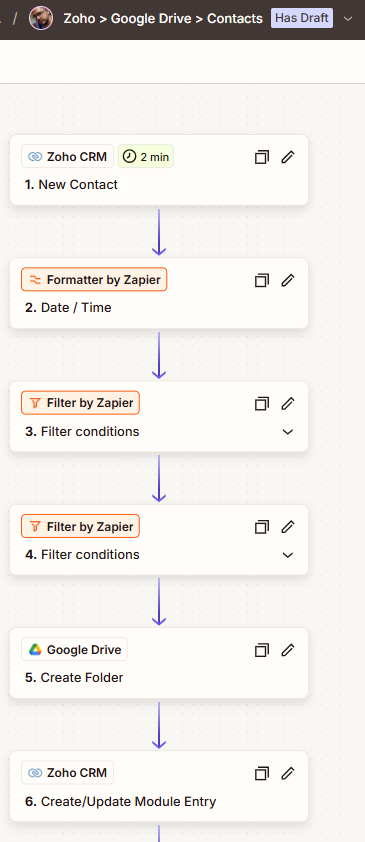From Memory to Systems: Our First Steps Towards Scaling
Dad ran the business with everything in his head — names, quotes, schedules, stock. When he handed it to Cassandra, she did the same. It was incredible to watch — but I’ve been thinking about the future.
If we’re serious about scaling, we can’t rely on memory alone. It’s not sustainable.
Finding the Right Tools
At first, I didn’t think we needed a CRM — short for Customer Relationship Management system. It’s basically a digital tool that helps you keep track of customers, jobs, quotes, schedules — all in one place. Think of it like a digital whiteboard that remembers everything for you — no more scribbled notes or forgotten messages.
I figured we could manage with what we had. But the deeper I got into things, the more I realised — that’s exactly what we were missing.
I trialled a bunch of platforms — Ohoo, Monday.com, Tradify — and signed up for all the free trials. Then came the flood of aggressive sales emails.
Eventually, I landed on Zoho. It’s got a basic but customisable setup, the price won’t break us as we grow, and it gave me enough control to build what we needed.
This is what our job tracker looks like in Zoho. Each card is a customer or job, and we can see exactly what stage they’re at — quoting, in progress, or complete. No more digging through emails or notebooks
I wanted:
A kanban board to track jobs
Contact sync with Xero
Automated folder creation in Google Drive
Calendar invites to manage schedules
Zoho couldn’t do it all out of the box — but with Zapier (a tool that connects different apps together), I felt like a tech wizard. I got excited. Maybe way too excited.
This is what one of our automations looks like in Zapier. When a new customer is added, it triggers steps like creating folders, syncing with Xero, and updating our records — all in the background
The Go-Live Disaster
I told Cassandra, “It’s all set up. New customer? It'll automatically create folders, sync to Xero, log calendar entries — the works.”
Then came go-live day.
She added a customer. Then another. My phone lit up. Errors everywhere.
Xero had created the same customer 15 times. Google Drive had spun up 10 folders for a single entry. It was chaos. I’d accidentally created a digital monster — each automation triggering another, spiralling into a loop of folders and duplicates.
Getting Smarter, Not Just Simpler
After the chaos, I shut everything down and went back to square one. What do we really need right now? Just visibility — knowing where each job is at.
With that focus, I rebuilt the automation — but this time with guardrails. Now, before anything happens, it checks if a customer already exists. If not, it creates a folder in Google Drive and adds them to Xero — only when needed. It’s not fancy, but it works.
It’s still a work in progress. There’ll be trial and error. But that’s what building smarter systems looks like — steady, practical steps that set us up for the long run.
Looking Ahead
I got carried away because deep down, I know this marks the beginning of a real shift in how we run the business. If we get this right, we’ll be able to train others to run things confidently — freeing up our time to focus on growth, improvement, and doing the work that really moves us forward.
If we’re going to reach our ambitious goals, it starts here.
💡 Final thought:
If you’re still running your business from memory — maybe it’s time to build something bigger than that.
Know someone like this? Reach out — we may be able to help.



